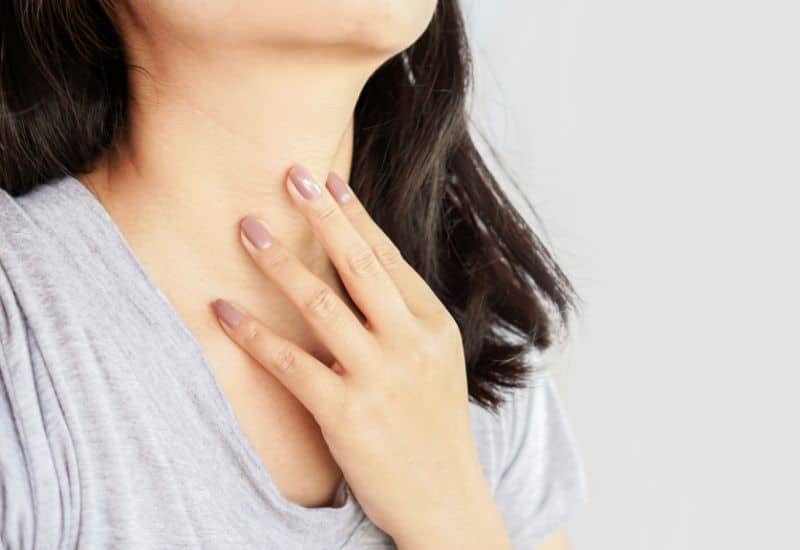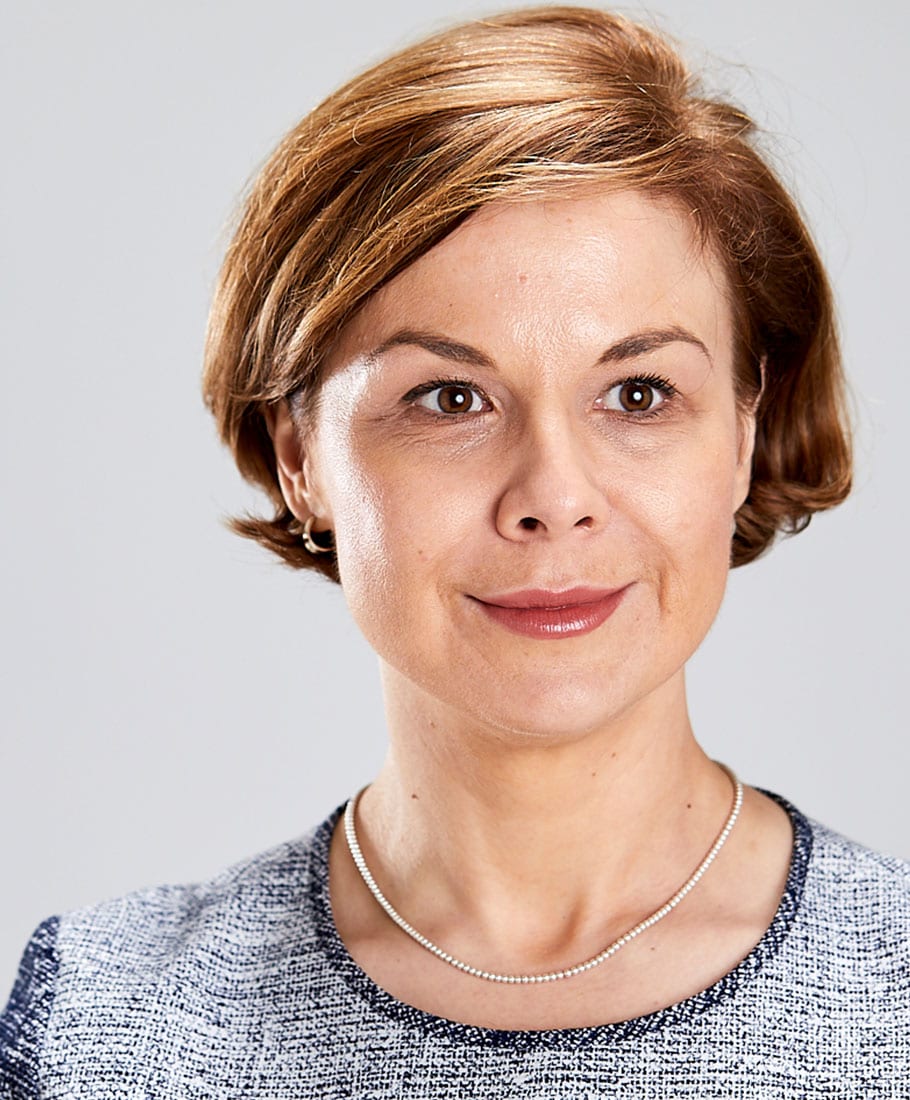Procedures
SCC Skin Cancer Surgery

Getting diagnosed with skin cancer can be a highly stressful and unsettling experience. One of the most effective ways to treat this disease, particularly Squamous Cell Carcinoma (SCC), is through skin cancer surgery. This detailed guide will provide you with all the necessary information about SCC skin cancer surgery, covering everything from the procedure itself, its benefits, the ideal candidates, different types, recovery period, and potential risks. With this knowledge, you will be better equipped to make informed decisions about your health and treatment options.
Anca Breahna is a highly respected and experienced consultant plastic surgeon with an outstanding track record in the treatment of skin cancers, including Squamous Cell Carcinoma (SCC).
At a glance
15-30 minutes
Local Anaesthesia
A few days
Table of Contents
What is SCC Skin Cancer Surgery?
SCC skin cancer surgery is a medical procedure designed to remove squamous cell carcinomas, a type of skin cancer. These are malignant tumours that develop in the squamous cells, which make up the middle and outer layers of your skin. Squamous cell carcinoma is the second most common type of skin cancer in the UK, right after basal cell carcinoma.
Squamous cell carcinomas can form on any part of your body, but they’re often found on areas exposed to the sun, such as the face, ears, and hands. They usually appear as firm red nodules or flat lesions with a scaly or crusty surface. SCC skin cancer surgery aims to remove these carcinomas completely to prevent them from spreading to other parts of your body.

Who Needs SCC Skin Cancer Surgery?
As mentioned before, the need for SCC skin cancer surgery is largely determined by specific factors relating to your diagnosis and overall health. Let’s take a more in-depth look at each:
Size, Depth, and Location of the Carcinoma
- Size and Depth: Larger and deeper squamous cell carcinomas are more likely to spread to the surrounding tissues or even to the lymph nodes. For such carcinomas, surgery is often the most effective treatment option to ensure complete removal of the cancerous cells
- Location: Carcinomas located on areas of the body like the face, ears, hands, or feet are often best treated with surgery. These areas are more sensitive and more visible, so the precision of surgical removal is beneficial
High-Risk Features
- Nerve Involvement: If the carcinoma involves nerves (referred to as perineural invasion), it’s considered high-risk. The involvement of nerves can lead to a higher risk of recurrence and spread; hence, surgical intervention becomes necessary
- Unclear Margins: Sometimes it can be difficult to establish the exact boundaries of the carcinoma. In such cases, surgical removal can ensure that no cancerous cells are left behind
- Rapid Growth: A rapidly growing squamous cell carcinoma indicates aggressive behaviour and poses a higher risk of spread, therefore, necessitating surgery
Weakened Immune System: If your immune system is compromised due to conditions like HIV or treatments like chemotherapy, your body may struggle to fight off cancer cells. In such cases, surgery can be a valuable option to prevent further spread of the carcinoma
Ineffectiveness of Other Treatments: If you have previously tried other treatments such as cryotherapy, radiation, or topical medications and these have not been effective, or if they’re unsuitable for your situation, then surgery would be recommended
Benefits of SCC Skin Cancer Surgery
SCC skin cancer surgery brings numerous benefits, playing an essential role in skin cancer management:
- Effective Removal: The primary aim of this surgery is to fully remove the squamous cell carcinoma. By extracting the cancer cells, you significantly reduce the risk of the cancer spreading to other areas of your body
- Preserves Healthy Skin: These procedures are designed to minimise damage to your healthy skin. Anca uses precise methods to target only the cancerous cells, leaving your healthy skin intact
- Decreases Recurrence: Surgery reduces the likelihood of the cancer recurring, leading to better long-term outcomes
- Immediate Results: Unlike other treatments that take time to show results, surgery provides an immediate solution to the problem
Types of SCC Skin Cancer Surgery
Excisional Surgery
Description: Excisional surgery involves using a scalpel to remove the cancerous growth along with a border of healthy skin, known as the margin, to ensure complete removal of the cancer
Suitability: This is often the first choice for small and well-defined squamous cell carcinomas. It can be performed in almost any location on the body
Considerations: The size of the excised area can lead to a noticeable wound. If the wound is large, it might need to be covered with a skin graft or skin flap
Mohs Surgery
Description: In Mohs surgery, the surgeon removes the cancer layer by layer, examining each layer under a microscope until no cancer cells are detected. This approach maximises the preservation of healthy skin while ensuring complete cancer removal
Suitability: Mohs surgery is beneficial for larger cancers, those with unclear boundaries, or in cosmetically sensitive areas. It’s also used for cancers that have recurred after previous treatment
Considerations: It can be a time-consuming procedure as your plastic surgeon needs to examine each layer of skin during the operation. However, it has a high cure rate and typically leaves the smallest possible scar
Curettage and Electrodessication
Description: Anca scrapes away the cancer with a curette, a sharp, spoon-shaped instrument, then uses an electric needle (electrodesiccation) to destroy any remaining cancer cells and control bleeding
Suitability: This is typically used for small, well-defined squamous cell carcinomas
Considerations: The procedure may need to be repeated during the same session to ensure all cancer cells are removed. It’s generally less effective for aggressive squamous cell carcinomas or those in high-risk areas
Laser Surgery
Description: Laser surgery uses a powerful beam of light to vaporise the cancer cells. It’s a non-invasive procedure that doesn’t involve any cuts or stitches
Suitability: This can be used for superficial squamous cell carcinomas that are limited to the outermost layer of skin
Considerations: Laser surgery might not be suitable for larger, deeper tumours or those in certain locations. It also requires a high level of expertise to ensure the precise targeting of cancer cells
How is the SCC Skin Cancer Surgery Performed?
The specific process depends on the type of surgery you’re having, but generally, here’s what you can expect:
- The area around the cancer will be cleaned and marked
- You’ll receive a local anaesthetic to numb the area
- Using the appropriate surgical method, Anca will remove the cancer
- Once all the cancer is removed, the wound will be closed with stitches or covered with a skin graft or flap, if necessary
- The removed tissue will be sent to a laboratory to ensure all the cancer has been eliminated
There are several surgical procedures available to treat squamous cell carcinoma, each with distinct characteristics.

Recovery after SCC Skin Cancer Surgery
The recovery process following SCC skin cancer surgery will depend on several factors, such as the type of surgery performed, the size and location of the removed carcinoma, and your general health. Here, we’ll delve into the various aspects of recovery and what you might expect:
Bandaging and Wound Care
- Immediately after surgery, the wound will be covered with a bandage or dressing, which serves to protect the area and aid in healing. Your plastic surgeon will instruct you on how often and when to change this dressing
- It’s crucial to keep the wound clean and dry to prevent infections. Anca will provide guidelines on how to clean the wound, and when it’s safe to resume bathing or showering
Pain Management
- Some level of pain or discomfort can be expected following surgery. This can usually be managed with over-the-counter pain relievers such as paracetamol. If the pain is severe, your surgeon might prescribe stronger medication
- Ice packs can be used to reduce swelling and provide some pain relief. However, ensure you wrap the ice pack in a cloth to prevent direct contact with your skin
Follow-Up Visits
- You’ll have follow-up appointments with Anca to monitor your healing process and to address any concerns you might have
- If stitches were used during surgery, they may need to be removed during one of these appointments. This is typically done 1-2 weeks after the surgery
Activity Levels
- You can resume your regular activities within a week or two. Your plastic surgeon may advise you to avoid strenuous activities for a specific period to avoid putting pressure on the surgical wound
- It’s also advised to avoid direct sunlight on the surgical site as your skin will be more sensitive and susceptible to sunburn. If you need to go out in the sun, use a broad-spectrum sunscreen with at least SPF 30 and wear protective clothing
Emotional Recovery
- The emotional recovery after skin cancer surgery is as important as physical recovery. It’s normal to feel a range of emotions, from relief to worry. You might find it beneficial to talk to a mental health professional or a support group if you’re finding it difficult to cope
Reviews
Patient satisfaction is the top priority for Anca. You can find how patients feel about her work below.
Wish I’d Done It Sooner! I am so pleased with the results
After searching and deliberating for a long time, I consulted Anca regarding the removal of 3 lipomas. From start to finish, she was fantastic! One of the lipomas was on my forehead and I have to search for the scar! I am so pleased with the results of all and the one regret is that I didn’t find her sooner. I wouldn’t hesitate to recommend her

Miss Breahna removed a cancerous nodule from my forehead in March 2021. I was quite nervous when I arrived at the hospital, but when I was greeted by a member of her team I started to feel calmer as they were so professional and friendly.
Once inside the theatre Miss Breahna and her team helped me to feel relaxed and comfortable throughout, the team atmosphere was friendly and upbeat during my operation and I was looked after wonderfully. I would recommend Miss Breahna and her team to anyone requiring this type of surgery.Kate Hodson

Ms Anca Breahna was most kind and empathetic during my recent procedure for skin cancer. She reassured me that I’m now completely clear, I have total confidence in her and would recommend her unreservedly. Thank you Anca.
Further Reading
- Read Anca’s Blog on What Does Skin Cancer Look Like?
- Read Anca’s Blog on Looking for Skin Cancer Treatment near Chester?
- Read Anca’s Blog on Skin Cancer & Mole Surgery At Chester Cosmetic Surgery

Procedure
Frequently asked questions
What are the signs of squamous cell carcinoma (SCC)?
Signs of SCC include firm, red nodules or flat lesions with a crusted or scaly surface. These usually appear on sun-exposed areas of the body, like the face, ears, and hands. Changes in existing moles, such as irregular growth or colour changes, can also be a sign of skin cancer. It’s important to consult with a healthcare professional if you notice any of these signs.
How long does SCC skin cancer surgery take?
The length of the surgery largely depends on the size and location of the carcinoma, as well as the type of surgical procedure being used. For instance, simple excisional surgery for a small carcinoma might only take about 15-30 minutes, while Mohs surgery for a larger carcinoma could take several hours as it involves removing the cancer in stages and examining each stage under a microscope.
Will I be put to sleep (under anaesthesia) for SCC skin cancer surgery?
Most SCC skin cancer surgeries are performed under local anaesthesia, which means you’ll be awake but the area around the carcinoma will be numbed so you won’t feel pain. For more extensive surgeries or those in difficult-to-reach areas, your plastic surgeon may opt for general anaesthesia, where you’ll be unconscious.
What can I expect after SCC skin cancer surgery?
After surgery, you might experience some pain or discomfort, but this is usually manageable with over-the-counter or prescribed pain relievers. There may be a scar once the wound heals, and its size will depend on the size of the carcinoma that was removed. You’ll also need to protect your skin from the sun and have regular check-ups to monitor healing and detect any possible recurrence of cancer.
What's the success rate of SCC skin cancer surgery?
The success rate of SCC skin cancer surgery is generally high. For instance, the five-year cure rate for primary (first-time) SCCs treated with Mohs surgery is up to 99%. However, the success rate can vary depending on several factors, including the size, location, and aggressiveness of the cancer, as well as the overall health of the patient.
What are the risks of SCC Skin Cancer Surgery
While SCC skin cancer surgery is generally safe, no surgery is without risks. Here are some potential complications associated with SCC skin cancer surgery:
- Scarring: Any form of surgery can leave a scar. Depending on the size and location of the carcinoma, this scar may be more or less visible
- Infection: As with any surgery, there’s a small risk of infection. It’s important to keep the wound clean and follow your plastic surgeon’s instructions to minimise this risk
- Nerve damage: If the carcinoma is near nerves, there’s a risk of nerve damage during surgery. This could lead to numbness or weakness in the area
- Recurrence: There’s always a chance that the cancer could come back, even after successful surgery. Regular follow-up appointments wilal help your plastic surgeon catch any signs of recurrence early
Medical References about SCC Skin Cancer
- Skin Cancer: Squamous and Basal Cell – American Cancer Society
- Squamous Cell Carcinoma of the Skin – Mayo Clinic
- Squamous Cell Carcinoma – British Association of Dermatologists






